Yes. This is a church with real human bones.
I first heard of the church constructed with human bones in the documentary Long Way Round, chronicling the adventures of Ewan MacGregor and Charlie Boorman as they travel from London to New York by motorcycle.
Like Stonehenge, it seemed to me one of those things that I didn’t particularly make it a mission to see, but couldn’t pass up the opportunity since we were already in such close vicinity.
The bone church’s official name is Sedlec Ossuary. An ossuary is a place where they store human remains, i.e. bones (“oss” is Latin for bones).
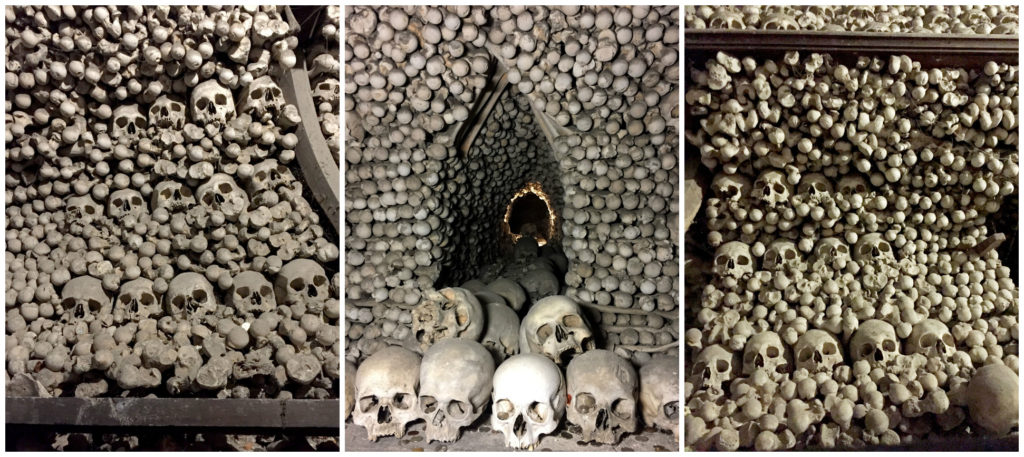
The ossuary is part of a gothic monastery called the Church of All Saints. Legend has it that a monk brought a bit of soil back from Golgotha (in Jerusalem/the Holy Land) and scattered it around the church’s cemetery, drawing people from all over Europe who desired to be buried here, hoping the soil would bring their dead bodies/spirits holiness and healing (though it seems it’d be a bit late for that!).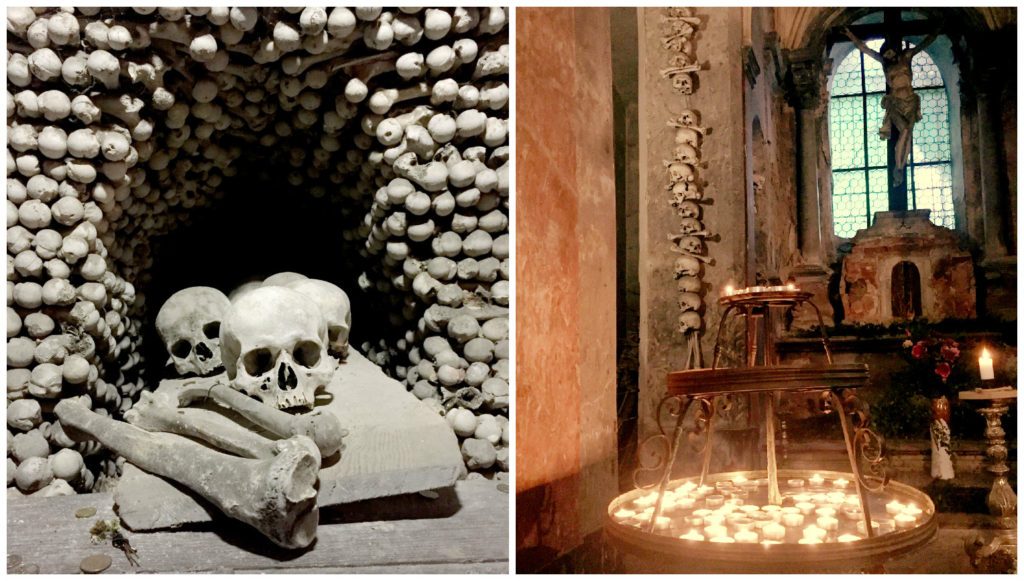
With what the church calls “the great epidemic of the 14th century” and the Hussite wars, tens of thousands more bodies were added to the cemetery. The remains of abandoned graves were moved to an ossuary below the church.
A blind monk is said to have rearranged the bones into 6 pyramids and, by miracle, regained his eyesight afterwards.
Apparently, bone pyramids alone are not nearly decorative enough and although it is said that bone decorations were created before the 16th century, it was a guy named Jan Blazej Santini-Aichel who wrote the basics on Baroque skeletal decorations. Yes, this is a validated subject.
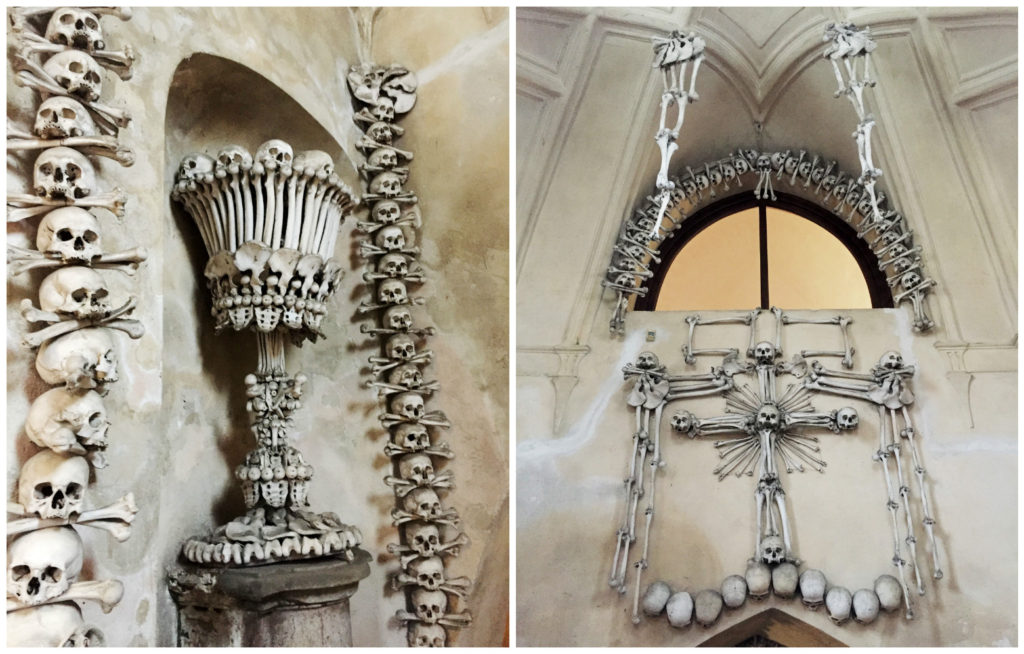

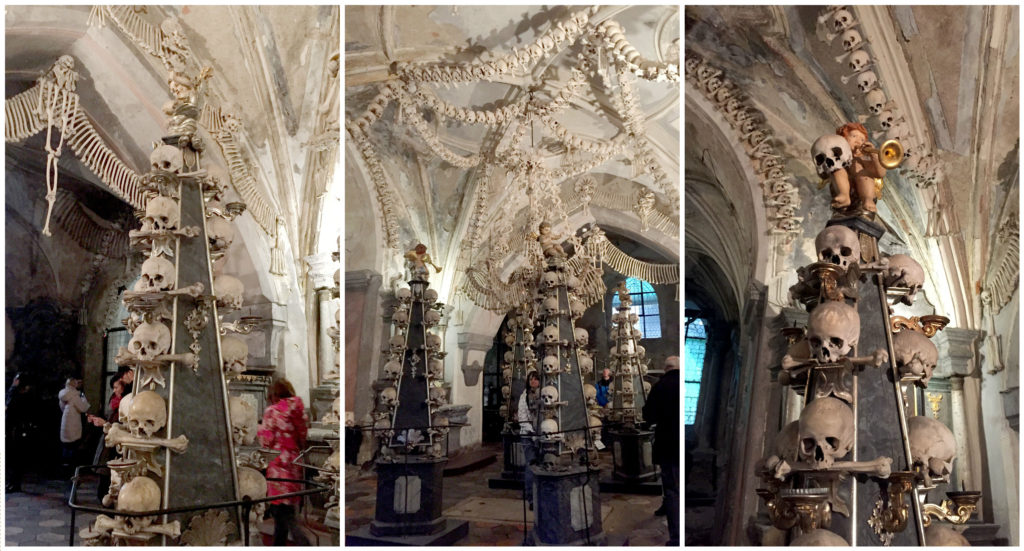
Since the monastery was abolished by Joseph II in 1783 a Schwarzenburg family purchased the property and maintained the ossuary. They hired Frantisek Rint to restore the bone decorations. As part of his work, Rint bleached the bones with chlorinated lime and created the chandelier and Schwarzenburg coat of arms.

If the bones were bleached in 1783, were they not disinfected before? *shudder*
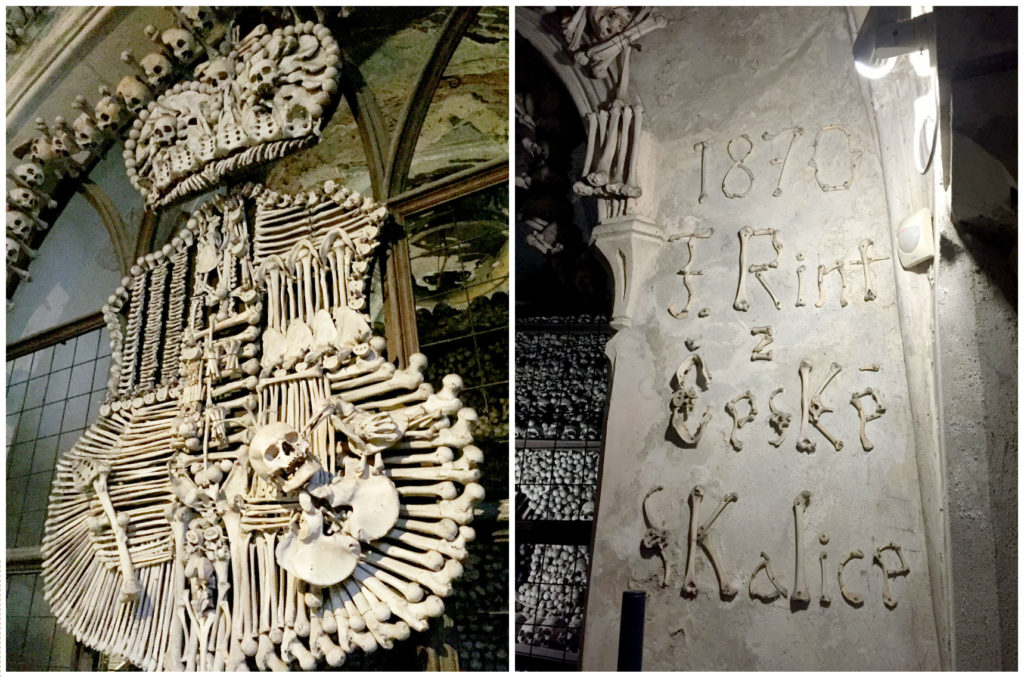
The church associates this Latin phrase with “the Christian Hope of Resurrection…it is not a celebration of death, but it symbolizes the equality of people in front of God’s throne”
I guess the take away is that since no one is immortal, we are all equal. (Trump/Pence, listen to the church!)
Logistics:
Tour groups charge anywhere from $30 to $60 USD take you to Kutna Hora from Prague with the main draw being St. Barbara’s church. While some do stop at the Ossuary, I hear it’s a quick 20-minute pit stop at most. Though it’s not the biggest church you’ve ever seen, it is wondrous enough to merit your un-rushed time and attention.
Train is the way to go to get to Kutna Hora and stops off just 10 minutes from the monastery and Sedlec Ossuary. The train ride only takes 55 min. each way and there are enough of them you can decide to make this a half or full day trip.
Thankfully, the woman helping us at Prague’s main train station spoke English, but I was prepared for any situation by writing down what we were looking for. This has worked for us before; you just write the “To, From, (# of) Passengers, Time, Date” in country’s native language, filling in the details for your specific destination (also in the native language, duh. Prague is “Praha” in Prague).
The train costs 185 korunas round trip, and a bus ride in tow the city center is 12 korunas (0.50 USD), we had time to kill so we walked the way back. Entrance fees to Sedlec Ossuary, The Cathedral of Assumption, and St. Barbara’s Cathedral combined is also 185 korunas. So transportation+entrance fees totaled 382 korunas ($15.28), meaning we had extra cash for a drink and dinner!
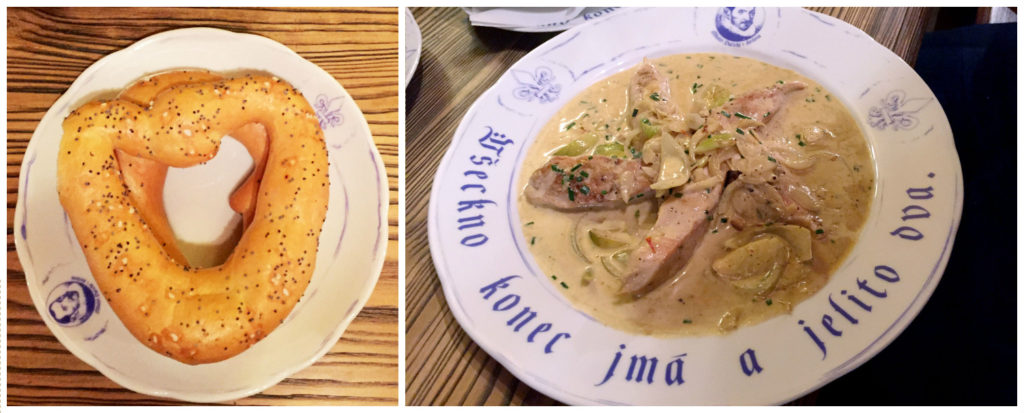

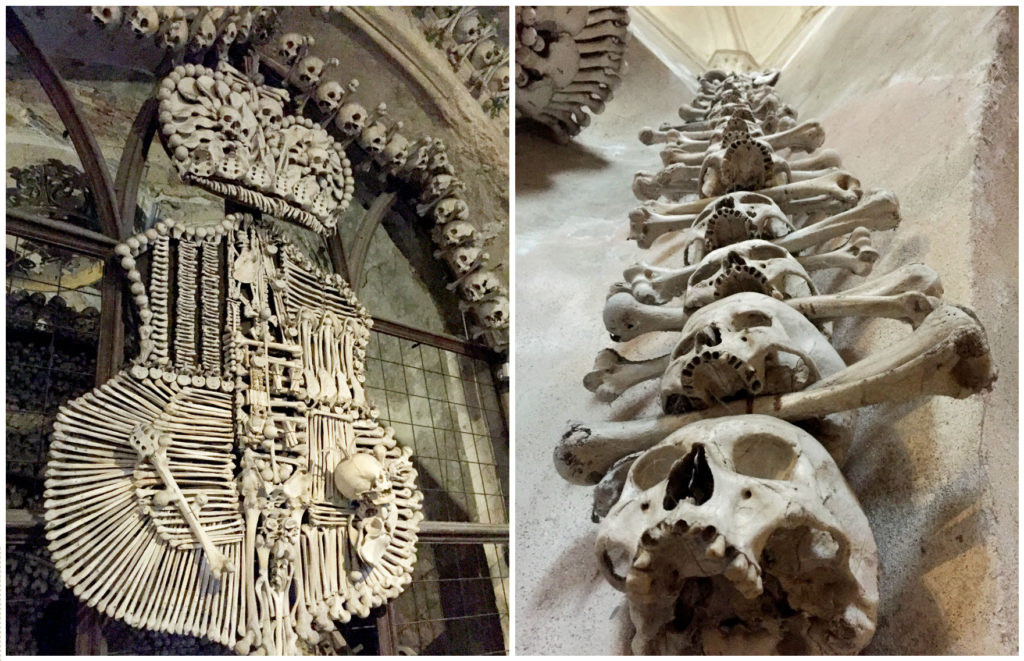
Lol! Too eerie for me but would love to sample that great looking chicken dish and maybe the pretzel!!
Yes! The chicken dish was really creamy and yummy. The pretzel was lighter and crunchier than I thought, almost like one of those crunchy/thin breadsticks in packages at the market, but fresh! Also, no twizzle in the middle?!